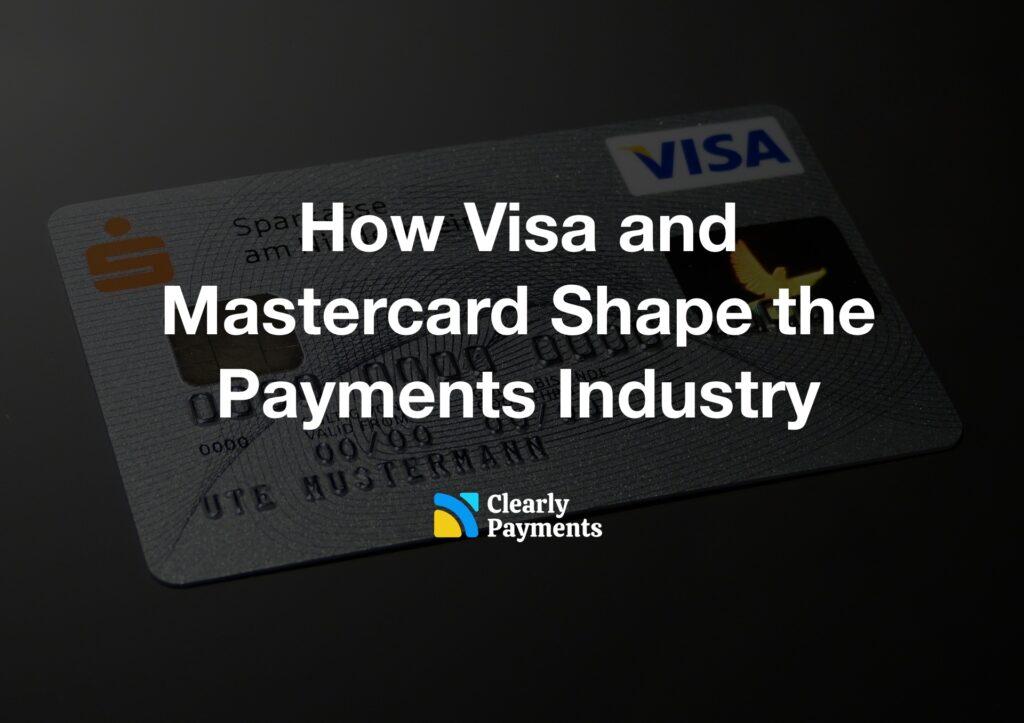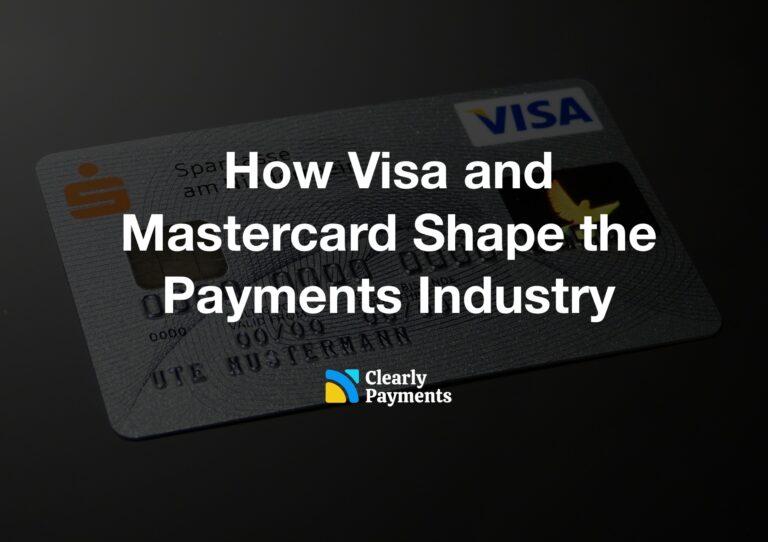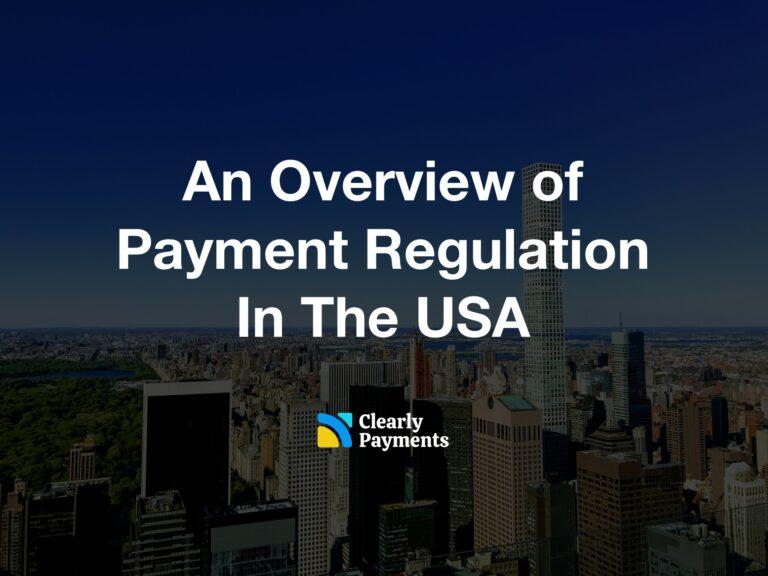At the forefront of payment industry, particularly in credit cards, are two giants: Visa and Mastercard. As the world’s leading payment networks, Visa and Mastercard play a pivotal role in shaping the landscape of electronic payments on a global scale.
This article aims to explore the impact that Visa and Mastercard has on the payment industry, examining their influence on innovation, regulation, consumer behavior, and the broader economy.
Historical Context of Visa and MasterCard
Visa and Mastercard, two of the world’s largest payment networks, have their roots in the late 1950s and 1960s. Bank of America launched the BankAmericard in 1958, widely considered the first credit card available to consumers, which eventually evolved into Visa.
In 1966, a group of California banks formed the Interbank Card Association (ICA), later known as Master Charge and then Mastercard. Both networks expanded globally through partnerships with banks and financial institutions, establishing themselves as leading facilitators of electronic payments.
Over the decades, Visa and MasterCard have evolved into publicly traded companies with expansive global networks, connecting millions of merchants, financial institutions, and consumers worldwide. These networks have transformed the way payments are processed, moving from paper-based transactions to electronic authorizations and settlements. The introduction of magnetic stripe cards, followed by chip-enabled cards and contactless payments, has revolutionized the user experience and enhanced security measures, reducing fraud and enhancing consumer trust.
How Visa and MasterCard Influence the Payment Industry with Their Market Dominance
The biggest is payment network is Visa with 40% of the global market. The next biggest isn’t Mastercard but UnionPay, a China-based payment network that dominates financial transactions in much of the Eastern Hemisphere. UnionPay has 32% of the global credit card market. Then comes Mastercard, with 24%. However, in North America, Visa and MasterCard are the largest. UnionPay is relatively small in North America.
Visa and Mastercard’s market dominance contributes to consumer convenience and choice in payment options. Consumers enjoy the convenience of using Visa and Mastercard cards for transactions across a wide range of merchants and industries globally. The ubiquity of Visa and Mastercard cards ensures that consumers have access to a variety of payment methods, including credit, debit, and prepaid cards, offering flexibility and convenience in their payment choices.
Visa and Mastercard’s widespread acceptance among merchants is a direct result of their market dominance. Merchants are incentivized to accept Visa and Mastercard payments due to the large customer base associated with these networks. However, this widespread acceptance comes at a cost for merchants in the form of interchange fees. As dominant players, Visa and Mastercard have significant control over interchange fee rates, which can impact merchants’ costs for processing card transactions. High interchange fees can eat into merchants’ profit margins, particularly for small businesses with tight budgets.
Visa and MC Drive Innovation in Payments
Visa and Mastercard are at the forefront of innovation in the payment industry, continually introducing new technologies and solutions to meet the needs of consumers and businesses. From mobile payments and digital wallets to tokenization and biometric authentication, they are driving the shift towards a cashless society, offering convenience, security, and efficiency in payment processing.
Moreover, Visa and Mastercard have been instrumental in promoting open banking initiatives and fostering partnerships with fintech startups and technology companies. Through collaborative efforts and strategic investments, they are accelerating the adoption of emerging technologies such as blockchain, artificial intelligence, and Internet of Things (IoT) in the payment ecosystem.
Startups attempt to compete with and even displace Visa and MasterCard: Companies have been attempting to displace Visa and Mastercard and disrupt the traditional payment landscape. Fintech startups and technology companies, in particular, have emerged as competitors, introducing alternative payment methods such as digital wallets, peer-to-peer (P2P) payment platforms, and blockchain-based solutions. These disruptors often focus on addressing pain points such as high transaction fees, lengthy settlement times, and lack of transparency associated with traditional card networks. Additionally, some companies seek to challenge Visa and Mastercard’s dominance by forming alliances with retailers, financial institutions, and other industry players to create alternative payment networks or platforms. By capitalizing on consumer demand for faster, more secure, and cost-effective payment options, companies strive to carve out a niche in the market and reduce the reliance on traditional card networks. The payments industry is so large that new startups will continuously work to take a slice of the market.
How Visa and MasterCard Shape Regulations
Visa and Mastercard, as global payment giants, hold substantial sway over the regulatory landscape within the payment industry. Their dominant market positions and extensive networks make them key players in shaping regulatory policies and compliance standards worldwide. One area of regulatory focus is competition policy and antitrust regulations, where authorities scrutinize their practices to ensure fair competition and prevent anti-competitive behavior. Interventions such as countries putting caps on interchange fees and mandates for transparent pricing aim to foster competition and protect consumer interests.
Interchange fees, a significant source of revenue for Visa and Mastercard, are subject to regulatory oversight. Authorities implement regulations to ensure fair pricing practices and protect merchants and consumers from excessive fees. Moreover, stringent data protection and privacy regulations, such as the GDPR and PCI DSS, govern how Visa and Mastercard handle sensitive financial data. Compliance with these regulations is crucial to maintaining consumer trust and avoiding penalties.
Financial regulations and compliance requirements also shape Visa and Mastercard’s operations. As global payment networks, they must navigate complex regulatory frameworks governing payment processing, AML/CFT, and consumer protection in multiple jurisdictions. Regulatory changes necessitate adjustments to their compliance frameworks and operational practices. Furthermore, Visa and Mastercard engage with regulatory authorities through advocacy efforts and industry consultations to influence regulatory policies and advocate for industry-friendly regulations conducive to innovation and competition.
Consumer Behavior is Shaped by Credit Cards Dominated by Visa and MasterCard
Visa and Mastercard have significantly influenced consumer behavior by revolutionizing the way people make payments. Through their widespread acceptance and easy accessibility, these payment networks have accelerated the adoption of cashless transactions worldwide.
By providing convenient, secure, and efficient methods of payment, they’ve encouraged consumers to rely less on cash and more on electronic forms of payment, including credit, debit, and prepaid cards. This shift has not only streamlined the purchasing process but also enabled consumers to manage their finances more effectively, track spending, and access rewards and perks offered by card issuers.
Additionally, Visa and Mastercard’s innovations in contactless and mobile payments have further reshaped consumer behavior, promoting faster and more seamless transactions, particularly in environments like retail, transportation, and dining. Overall, Visa and Mastercard have played a pivotal role in shaping consumer behavior towards embracing digital payments as a preferred and convenient mode of transaction in today’s fast-paced world.
Visa And MasterCard Impact on the Economy
Visa and Mastercard exert a profound influence on the economy through their pivotal roles in facilitating electronic payments. Their expansive networks, innovative payment solutions, and widespread adoption contribute to various aspects of the economy, including consumer spending, business operations, international trade, and financial services.
Consumer Spending and Economic Activity: Visa and Mastercard enable consumers to make purchases conveniently and securely, both online and offline, using credit, debit, and prepaid cards. The ease of electronic payments encourages consumer spending, stimulates economic activity, and contributes to overall economic growth. By providing access to a wide range of merchants and enabling seamless transactions, Visa and Mastercard play a significant role in driving retail sales and supporting various industries.
Business Operations and Efficiency: For businesses, Visa and Mastercard’s payment networks offer efficient and reliable payment processing solutions. Accepting card payments enhances customer convenience, reduces the reliance on cash, and streamlines transaction processes for merchants. Small and medium-sized enterprises (SMEs) benefit from increased sales opportunities, improved cash flow management, and enhanced operational efficiency facilitated by Visa and Mastercard’s payment infrastructure.
International Trade and Commerce: Visa and Mastercard facilitate cross-border transactions, enabling businesses to engage in international trade and commerce seamlessly. Their networks support multi-currency transactions, making it easier for businesses to conduct transactions in foreign currencies and expand their global reach. By simplifying payment processes and reducing currency conversion costs, Visa and Mastercard contribute to the growth of international trade and promote economic integration across borders.
Financial Inclusion and Access to Financial Services: Visa and Mastercard play a crucial role in promoting financial inclusion by providing access to electronic payment services for individuals who may not have access to traditional banking services. Prepaid cards, debit cards, and mobile payment solutions offered by Visa and Mastercard enable underserved populations to participate in the formal economy, receive wages electronically, and access essential financial services such as remittances and bill payments.
Economic Resilience and Stability: Visa and Mastercard’s electronic payment infrastructure enhances the resilience and stability of the economy by reducing reliance on physical cash and mitigating the risks associated with cash-related crimes such as theft and counterfeiting. Moreover, their secure payment systems and fraud detection measures help protect consumers and businesses from financial fraud, enhancing confidence in the financial system and contributing to economic stability.
The Future of Visa and MasterCard
The future of Visa and Mastercard is poised to be both exciting and controversial as they navigate an increasingly digitized and interconnected world. With the rise of cryptocurrencies and decentralized finance (DeFi), there’s growing speculation about the potential disruption these technologies could pose to traditional payment networks.
While Visa and Mastercard have begun exploring ways to integrate cryptocurrencies into their platforms, such as through partnerships with crypto exchanges, they face challenges from regulators concerned about the implications for financial stability and anti-money laundering (AML) efforts.
Moreover, their dominance in the payment space has drawn scrutiny from antitrust authorities, sparking debates about competition, fees, and market power. Despite these challenges, Visa and Mastercard are likely to remain formidable players, leveraging their vast networks, brand recognition, and technological prowess to shape the future of global finance, albeit amidst ongoing controversy and regulatory scrutiny.




